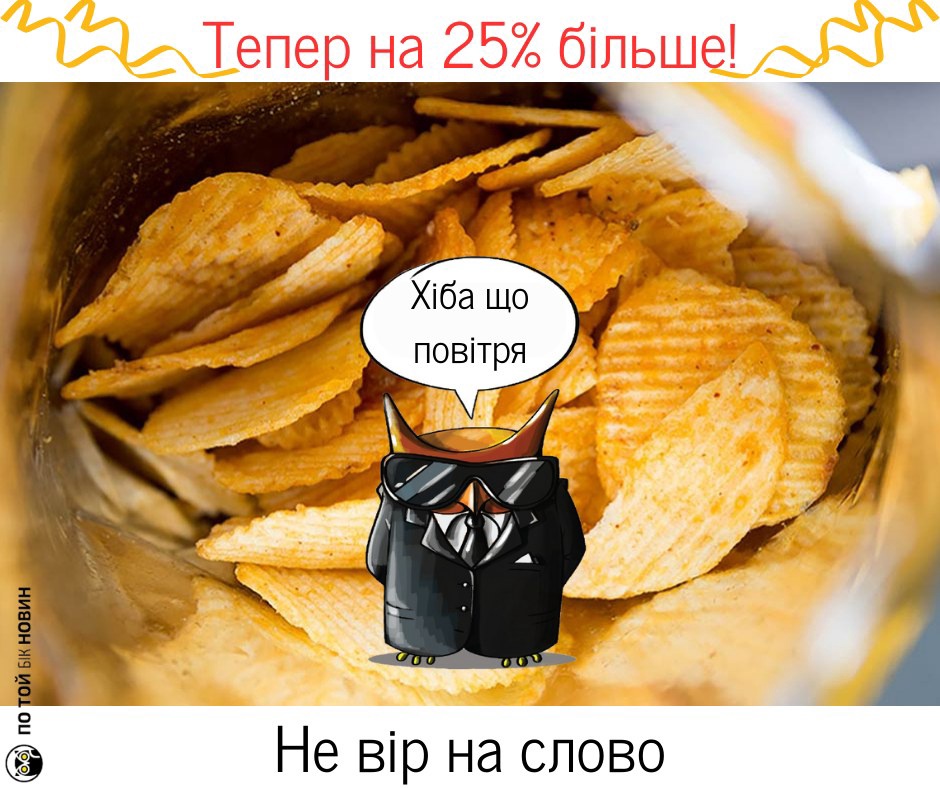What’s happened to “honest” litres and kilograms? We’ll explain the nature of the “shrinkflation” phenomenon

There is a decrease in the quantity of the product, but the price remains constant. A litre bottle of milk or a kilogram of rice, accustomed to by many people, has been replaced by 870 millilitres and 900 grams. There’s no limit - this reduction often persists at the same price. This phenomenon isn’t exclusive to Ukraine; consumers worldwide have taken note of it.
We’re dealing with the so-called “shrinkflation” (from the English word “shrink,” meaning “become smaller”). It’s a strategy where manufacturers reduce the volume or weight of a product in its packaging while keeping the price constant. In this way, manufacturers safeguard their profits and consumers who, it is assumed, will react more negatively to price hikes than to changes in packaging.
Shrinkflation occurs during periods of inflation or other economic shocks that negatively impact businesses. A relevant example for Ukrainians is the war, which has resulted in destruction to the country’s enterprises and increased prices for energy, raw materials, transportation, production, labour, etc.
In such circumstances, manufacturers have several options: increase the product’s price, change the ingredients to cheaper alternatives, or reduce the packaging size. The first two options are quite risky. For the manufacturer, it’s preferable to choose the safer third option.
What can buyers do to avoid getting a pig in a poke and better control their budget?
Read the labels on the goods carefully, as they usually contain all the reliable information about the product required by law.
Compare the cost of similar products by calculating the price per unit. For example, if a pack of 100 napkins costs 40 hryvnias, then the price of one napkin will be 40 kopecks. If we find a pack of napkins containing 110 pieces for the same 40 UAH, then the cost of one napkin is 36 kopecks. Similar calculations can be applied to volumes and kilograms.
In many European countries, it’s common practice to include the price per kilogram next to the price tag, which helps buyers to calculate the price more easily.
A concealed “price increase” can manifest not only through a reduction in the quantity of goods but also through changes in quality, design, and packaging shape.
Some examples:
manufacturers may opt for cheaper materials in the packaging;
they may change the concave bottom of metal, plastic, or glass jars. A larger bottom often means a smaller product;
a new packaging design, featuring phrases like “New Taste,” might be used to draw attention to a modified product;
a container that is narrower and taller may be used to camouflage a reduced volume.
In 2023, a study [1] examined products that reduced in size but not in price. The researchers claim that the average percentage of food shrinkage in the US was 11.84%.
The authors illustrate the absurdity of what the losses would be if the 12% reduction were applied only to food products by providing hypothetical examples; for instance, a 65-inch TV would measure 58 inches on the wall, and an 8-kilometre taxi ride would end nearly one kilometre before reaching the destination.
In September 2023, it was reported [2] that the French supermarket chain Carrefour began informing customers about cases of shrinkage by placing stickers on relevant food products. The stickers informed customers that the bottles had become smaller, and the contents of a package lighter.
Carrefour identified 26 products with reduced packaging, but the corresponding prices remained unchanged. Nestle (Guigoz infant formula reduced from 900 grams to 830 grams) and PepsiCo (Lipton peach-flavoured sugar-free iced tea reduced from 1.5 litres to 1.25 litres) were among the affected companies.
While Carrefour announced that it aimed to pressure companies into re-evaluating pricing policies, the consumer protection organization - 60 Millions de Consommateurs - criticized Carrefour, suggesting that the supermarket was attempting to build consumer trust through such actions.
Experts suggest [3] that once new sizes are introduced on the shelves, they tend to remain so. However, if economic challenges diminish, manufacturers might increase product quantities. Yet, as people may not always notice decreases in product quantity, they may overlook increases too. Consequently, companies resort to other marketing tactics: they release “new” products with new names and brightly coloured labels such as “+20%” or “BENEFIT.”
Consumers typically don’t like shrinkage. You’d agree, right, that it would be less pleasant to receive 85 grams of chocolate for the same price as 100 grams. Nevertheless, it may be perceived as a lesser evil compared to manufacturers reducing product quality in response to economic challenges, although this manipulation by manufacturers still appears insidious ![]()
Prepared by Dmytro Filipchuk
References:
[1] https://www.coventrydirect.com/.../visualizing.../
[2] https://www.bbc.com/news/business-66809188
[3] https://www.bbc.com/.../20230922-shrinkflation-isnt-a...






